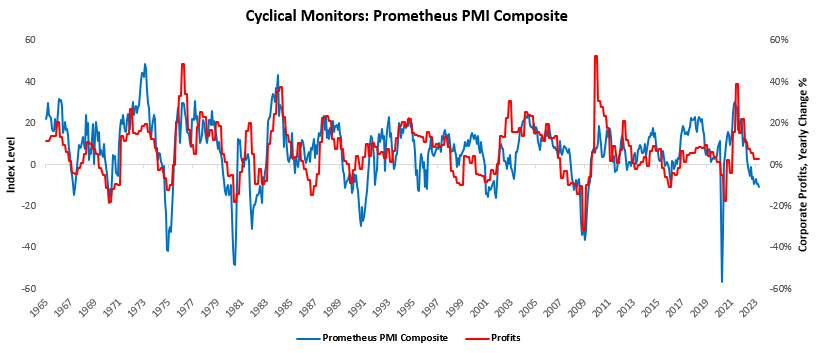PMIs & Cyclical Rotation Strategy
Welcome to The Observatory. The Observatory is how we at Prometheus monitor the evolution of the economy and financial markets in real-time. The insights provided here are slivers of our research process that are integrated algorithmically into our systems to create rules-based portfolios.
Today, we received new PMI data, which feeds into our PMI composite, whose readings continue to show a weak environment for growth assets (stocks, commodities, & high yield credit).
As of the latest available data, our PMI composite now shows a reading of -10.62. This was a sequential deceleration from one month prior and a decline in the three-month trend. PMIs are generally strong directional indicators of where we are in the profit cycle, as PMI respondents manage inventories and orders in response to their outlook on revenue and profitability. Below, we offer the latest readings of our PMI Composite, which offers us a sense of the pressures on profitability:
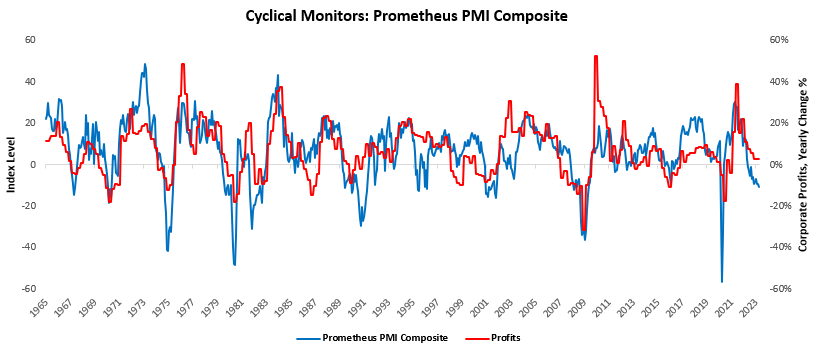
PMI indicators are typically biased toward the manufacturing sector. While this does indeed make sense since production is largely driven by the manufacturing sector, we think it is important to also separate these sub-indexes to understand the pervasiveness of the current trend in PMIs. Currently, our Manufacturing and Services composites are sow readings of -14.2 & -4.35, respectively, signaling consistency within the current trend:
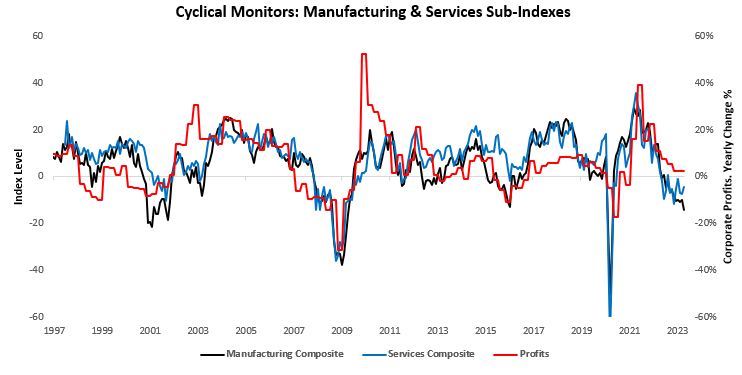
More specifically, we received data from Richmond & Philadelphia Manufacturing PMIs; we discuss these next.
The latest Richmond Fed manufacturing survey data showed a contractionary reading of -15, disappointing consensus expectations of -8. This reading was a sequential deceleration within a decelerating trend. The largest gaining segment was Employees, and the largest slowdown was in New Orders:
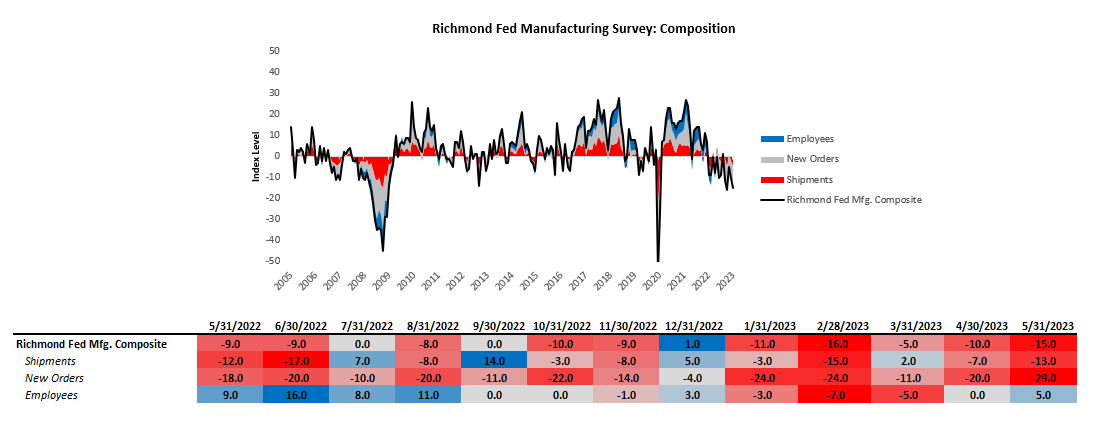
While Richmond Fed showed sequential softening, Philadelphia Fed PMIs showed sequential improvement. The latest Philadelphia Fed manufacturing survey data showed a contractionary reading of -10.4, up from the prior reading of -31.3. This reading was a sequential acceleration within an accelerating trend.
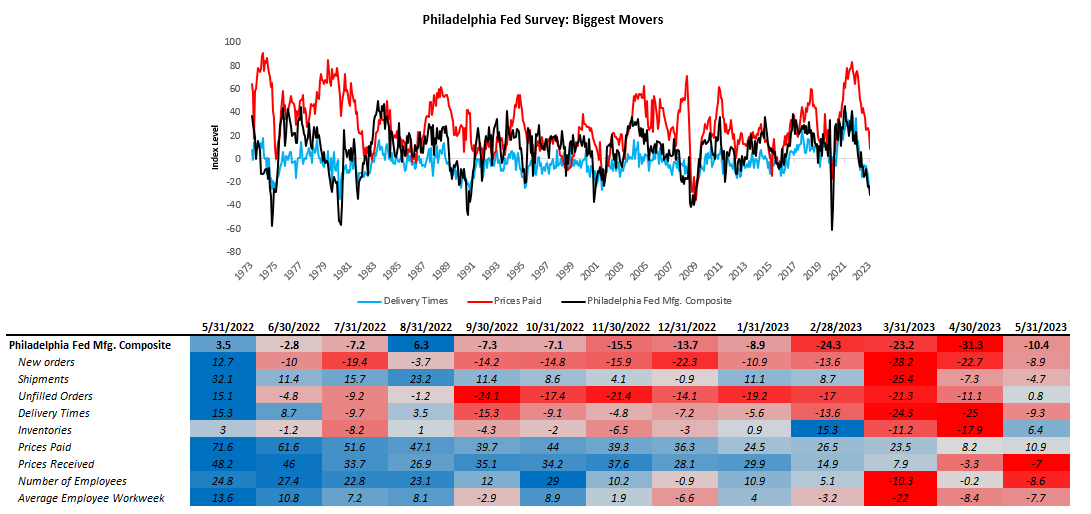
The largest gaining segment was Unfilled Orders, and the largest slowdown was in Prices Received. Zooming out, we think it is important to note that PMIs have generally been weak, though ISM and S&P Services PMIs have remained. We show some of the major PMI indices below:
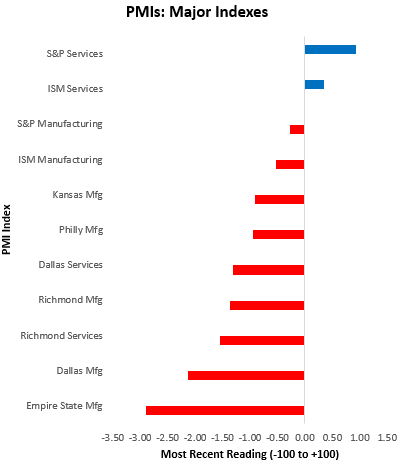
S&P Services has been the strongest of the PMIs, while Empire State Mfg has been the weakest. While services PMIs have shown some resilience, we think it is important to note that the trend in PMI remains lower and cyclical conditions continue to weaken. These conditions do not support taking on medium-term equity risk, despite recent trends in markets. To illustrate this concept, we show a simple cyclical rotation strategy that leverages our understanding of cyclical conditions to choose between equities and cash. When cyclical conditions are likely to deteriorate, it switches into cash; if not, it stays long the S&P 500:
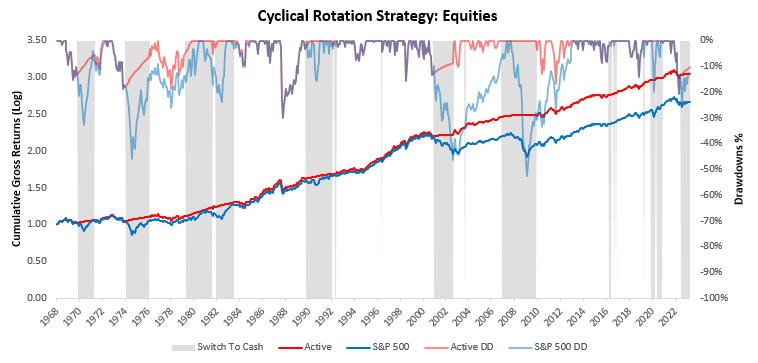
As we can see above, this strategy has outperformed equity markets significantly while offering much lower drawdowns. This strategy can be applied in a long/short fashion as well, but we wanted to convey our view as simply as possible: it is not an ideal time to take on equity risk unless you have the ability to change positions on a week-to-week basis. Data will likely continue to deteriorate, and this strategy remains in cash until it improves. Until next time.

